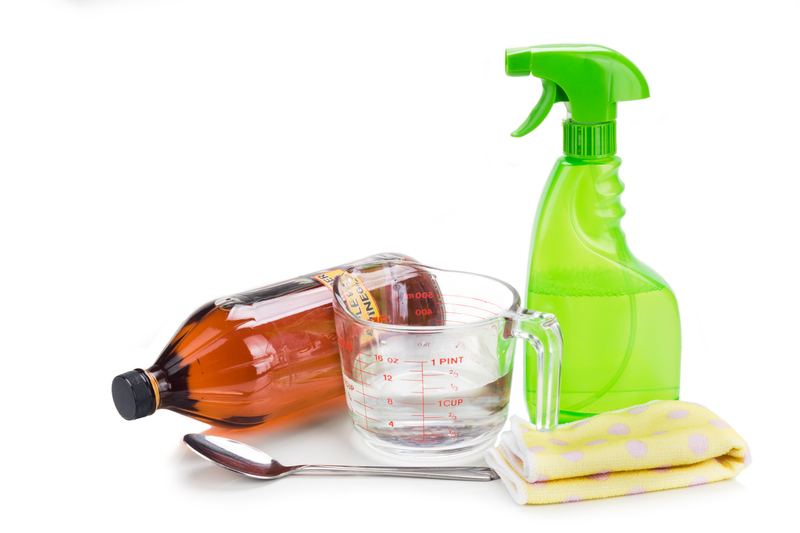Exploring steam cleaning methods for leather furniture
Posted on 19/05/2025
Exploring Steam Cleaning Methods for Leather Furniture
Leather furniture adds a touch of elegance, comfort, and timeless style to any home. However, maintaining its pristine condition can be a challenge, especially when it comes to effective cleaning without damaging the material. One of the modern solutions people often consider is steam cleaning. This article delves into the best practices, advantages, and considerations for steam cleaning leather sofas, chairs, and recliners, offering comprehensive insights to help you keep your cherished pieces spotless and long-lasting.

Why Choose Steam Cleaning for Leather Furniture?
Among various cleaning methods, steam cleaning leather furniture stands out due to its unique benefits. Let's explore why more homeowners and professional cleaners are turning to this technique:
- Deep cleaning: Steam penetrates into the pores of leather, lifting dirt and grime without abrasive scrubbing.
- Chemical-free: Using only water, the risk of chemical reactions or residues is eliminated.
- Sanitization: High-temperature steam effectively kills bacteria, dust mites, and allergens on the surface.
- Eco-friendly: Steam cleaning is a greener alternative, reducing your reliance on disposable wipes and harsh chemicals.
- Odor removal: Steam naturally neutralizes odors, leaving your leather furniture smelling fresh.
Precautions Before Steam Cleaning Leather Seating
Before wielding your steam cleaner, there are vital tips to remember, as steam and leather can be a tricky combination if not handled properly. Here is what you should check:
- Type of Leather: Identify whether your furniture is made from genuine, bonded, or faux leather, as cleaning protocols may differ.
- Manufacturer Guidelines: Always review any care instructions provided by the manufacturer to avoid voiding warranties or causing damage.
- Color Fastness Test: Perform a small spot test on an inconspicuous area to ensure the steam does not cause discoloration or texture changes.
- Condition of Leather: Avoid steam cleaning cracked, excessively worn, or untreated leather, as steam could exacerbate damage.
Is Steam Cleaning Safe for Leather Upholstery?
The big question many ask: Is steam cleaning safe for leather furniture? The answer is yes, with caution. When done correctly, steam cleaning is a safe and effective method; however, improper use may lead to fading, drying, or warping.
- Professional vs. DIY: For valuable or antique leather furniture, hiring a professional upholstery cleaner experienced in steam cleaning is recommended.
- Using the Right Steam Cleaner: Not all steamers are created equal. Handheld steamers with adjustable heat and pressure settings are ideal for leather surfaces.
- Moisture Control: Excess moisture can damage leather, so always use the lowest steam setting and limit exposure time.
- Dry Immediately: After steam cleaning, immediately dry the surface with a clean, soft cloth to prevent water stains or mold growth.
- Condition After Cleaning: Leather may lose natural oils after steam cleaning; always finish with a suitable conditioner to restore flexibility and shine.
Step-by-Step Guide to Steam Clean Your Leather Furniture
Follow this comprehensive guide to steam clean leather sofas, chairs, or recliners safely and effectively:
1. Preparation
- Vacuum First: Use a soft brush attachment to remove dust, crumbs, and debris from the surface and crevices.
- Check Cleaner Settings: Set your steam cleaner to the lowest effective temperature and pressure suitable for delicate materials.
- Attach a Microfiber Cloth: Place a clean, lint-free microfiber cover over the steam nozzle to prevent direct contact between hot steam and leather.
2. Spot Test
- In a hidden spot, apply steam for 10-15 seconds and blot dry. Check for color transfer or surface changes after the area dries completely.
3. Cleaning Process
- Work in Sections: Clean small areas one at a time rather than the entire piece at once to prevent overexposure.
- Keep the Nozzle Moving: Gently glide the steam nozzle in sweeping motions, never letting it linger in one place.
- Wipe Immediately: After steaming a section, wipe away loosened dirt with a dry microfiber cloth.
- Repeat as Needed: For persistent spots, gently repeat the process, avoiding aggressive rubbing or soaking.
4. Post-Cleaning Care
- Dry Thoroughly: Allow the furniture to air dry in a well-ventilated area, away from direct sunlight or heat sources.
- Apply Conditioner: Use a leather conditioner once the surface is dry to replenish oils and keep the leather supple.
Common Mistakes to Avoid When Steam Cleaning Leather
Poor technique can lead to damaged leather or a lackluster finish. Here are common mistakes to avoid:
- Over-saturating: Excess moisture can cause warping or mildew. Use minimal steam and always blot dry.
- Using Harsh Cleaners: Do not mix chemical detergents with steam; stick to plain distilled water.
- Ignoring Conditioning: Skipping the final conditioning step can leave leather dry and prone to cracking.
- Direct Steam Contact: Always use a cloth barrier between the nozzle and leather to prevent heat damage and water spots.
- Long Exposure: Never hold steam in one place for too long; brief, consistent movement is key.
Alternative Leather Furniture Cleaning Methods
Not convinced that steam cleaning is right for your leather couch or armchair? Here are alternative cleaning solutions you may consider:
- Dry Cleaning: Professional dry cleaners use specialized solvents safe for delicate leathers.
- Mild Soap Solutions: A mix of mild soap and distilled water can remove surface grime without harming leather.
- Commercial Leather Cleaners: Widely available products are formulated for safe, effective cleaning and conditioning.
- Baking Soda/Powder for Odors: Sprinkle, let sit, and vacuum up to neutralize unwanted smells.
- Hydrogen Peroxide (for Mold): A diluted solution can be spot-applied to treat mildew but must be handled carefully.
Tips for Extending the Life of Leather Furniture
Regardless of your preferred cleaning method, proper maintenance is essential for keeping leather furniture looking its best. Here are some helpful tips:
- Avoid Sunlight/Heat: Direct sunlight and proximity to radiators or fireplaces may dry out and fade leather.
- Regular Dusting: Gently wipe leather surfaces weekly to prevent dirt buildup.
- Immediate Spill Cleanup: Blot (don't rub) spills right away to prevent staining and warping.
- Routine Conditioning: Apply leather conditioner every 3-6 months to retain flexibility and luster.
- Rotate Cushions: Even out wear by rotating seat and back cushions if detachable.

Frequently Asked Questions (FAQs) About Steam Cleaning Leather Furniture
Can I steam clean all types of leather furniture?
It's best suited for durable, finished leather, such as those used in most modern sofas and recliners. Avoid steam cleaning delicate, unfinished, or suede leather.
How often should I steam clean my leather couch?
Steam cleaning should be a periodic deep cleaning method--once or twice per year is sufficient, combined with regular dusting and conditioning.
Do I need a special attachment for my steam cleaner?
Yes. Always use the upholstery or leather-safe attachment, ideally covered with microfiber or another soft material to protect the surface.
Will steam cleaning remove stains and odors from leather?
Steam is effective at removing light stains, bacteria, and odors but may not eliminate deep-set stains. Prompt spot treatment is always best.
Are there risks of using steam on leather?
If performed incorrectly, risks include fading, hardening, or cracking. Stick to low temperature/pressure settings and always condition after cleaning.
Conclusion: Should You Steam Clean Your Leather Furniture?
Steam cleaning leather furniture can be an efficient, eco-friendly, and powerful method for deep cleaning and sanitizing your leather upholstery. When used with care, the technique removes grime and bacteria without introducing harsh chemicals or leaving behind residue. However, the key to success is gentle preparation, correct technique, and thorough post-cleaning conditioning. By following the step-by-step guide and tips outlined in this article, you can safely refresh your leather sofas, armchairs, and recliners while maintaining their timeless beauty and durability for years to come.
Remember: When in doubt, consult the manufacturer or a professional leather cleaning specialist, and always treat your leather furniture with the respect it deserves.




